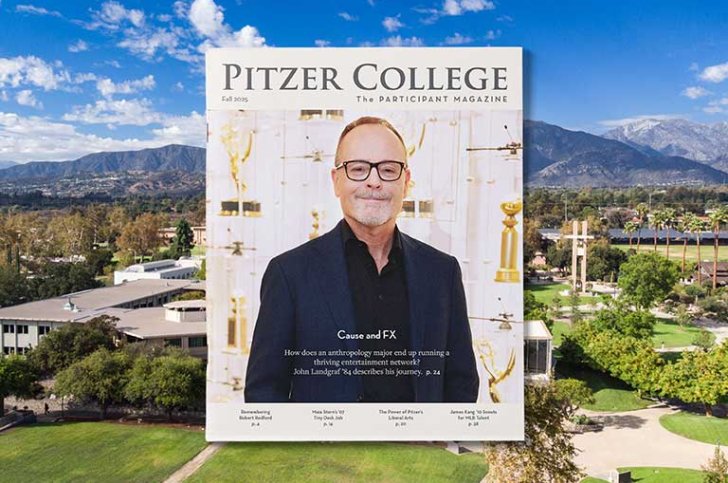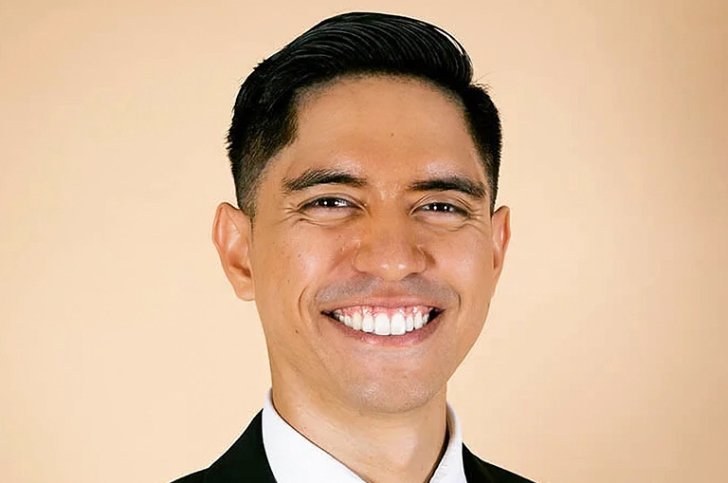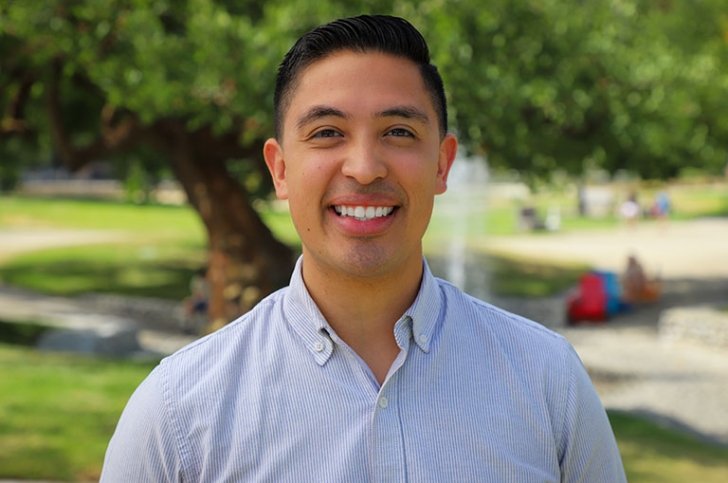Artist and Curator Casts Light (and Shade) on Art
Pitzer alum Elizabeth Faraci ’93 breaks conventions as an artist and art consultant to tell stories, build community, and recreate physical spaces.
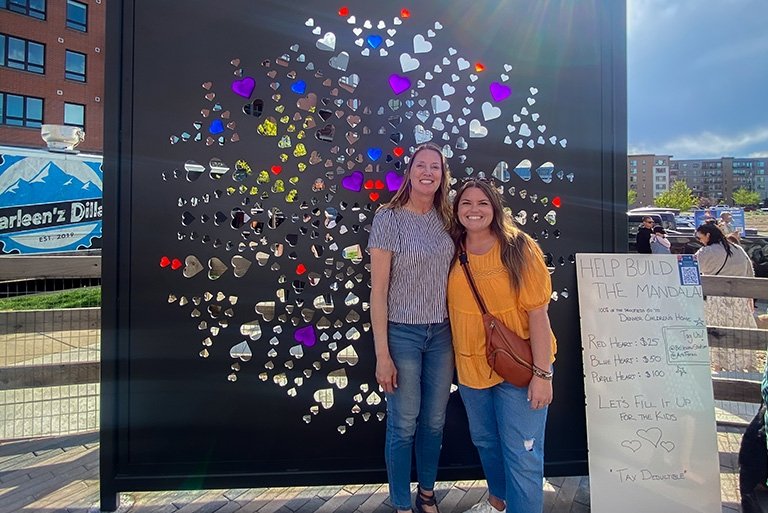
Elizabeth Faraci ’93 enjoys using unconventional materials in her art—including fallen crab-apple tree branches woven into a nest, torn Post-it notes shaped into portraits, and iridescent straws that turn into waves of rainbows in shifting light. No medium is out of reach for her. As an art consultant, she applies creative experimentation not only to express herself but to help others do the same.
One example is “The Mandala Project,” a public artwork that encourages community participation and philanthropy at Belleview Station in Denver, Colorado. Faraci recently collaborated with a developer and other partners to fabricate a circular mandala of empty hearts. Residents and visitors to the district donate to the Denver Children’s Home by purchasing a colored heart to fill the mandala. Faraci liked the idea of people leaving a lasting mark on the artwork.
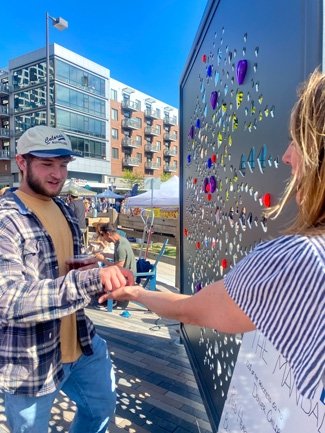
A mandala is a geometric configuration that serves as a representation of the universe in different spiritual traditions. According to Faraci, the mandala can also symbolize unity, harmony, and interconnectedness.
“We decided the mandala was a great idea because it says a lot about coming together as a community,” said Faraci. “You put something into it—your piece. Now you’re part of a larger cause.”
Faraci and her partners took inspiration from the “locks of love” in Paris to put a Denver spin on community engagement. To build the mandala, Faraci invited set design fabricators to collaborate. They tested translucent plastics for the hearts to ensure they could withstand the elements without becoming cloudy. Sunlight could then illuminate the hearts. Faraci was amazed to see people from all generations participating in “The Mandala Project” when it debuted.
Art as placemaking
Faraci’s diverse experiences in art and business have led her to this moment. After graduating with a bachelor’s degree in art from Pitzer and a master’s degree in art and design education from Pratt Institute, she had jobs in advertising, business development, and large graphic printing.
She also worked at a creative agency that specialized in placemaking for companies like Google. She said that at the agency, she learned about how to use art installations, wall and window graphics, and other materials to “convert spaces into places.”
To blend her background in art with her experience in placemaking, Faraci explored art consulting. However, she soon realized that she had a different philosophy about art than the firm she worked for.
“I think a lot of art consultants are not artists themselves,” said Faraci. “It becomes more of a business thing for them, whereas for me, it’s my life.”
Faraci started her own firm, Faraci Art Consulting, almost two years ago. She focuses on artists who may not be represented by major galleries.
“Emerging artists are much more in tune with what’s happening in our world today,” said Faraci.
Faraci compared an artist joining a gallery to a musician signing with a record label.
“Once you’ve signed on, they expect a certain product from you,” said Faraci. “That can be somewhat stilting to an artist.”
Breaking artistic boundaries
Faraci said she often feels at odds with the art world and how it dictates what is and isn’t valuable. One of her favorite books is The Creative Act: A Way of Being, which explores how an artist can transcend the output that might be expected of them.
“It’s natural for an artist to have lots of different experiences and types of expression,” said Faraci. “The art world often gravitates towards the thinking, ‘This person has their style, this is how you recognize them.’ But you shouldn’t create art for somebody else, because then you’re not putting out an authentic expression.”

Faraci’s own creative skills and curiosity have served her well. On a recent art consulting project, when an artist who embroidered photographs turned out to be too expensive, she learned how to embroider over one weekend so she could execute her client’s vision.
Faraci has curated art for a variety of clients, including Choice Hotels, Four Seasons Hotel, The Ritz-Carlton, Marriott, Peregrine Hospitality, and more. She devotes a lot of time into developing collections that enhance and expand each client’s story.
“Art should have these nuanced layers so if you look at it aesthetically it works, but if you want to know more, there’s a story to tell,” said Faraci.
Faraci can credit much of her fearlessness in artistic adventuring to her Pitzer experience. The late Professor Emeritus Michael Woodcock, who taught in the art field group, was one of her favorite professors. Faraci described him as one of the first people in her life who got behind her ideas. The classes and campus culture encouraged her to embrace being a something of a misfit—one who’s unafraid to forge her own path and to tap into her raw potential.
“Pitzer is the college for smart outcasts,” said Faraci. “It made me feel comfortable there. I didn’t feel like there was a ‘perfect model’ I had to fit. It confirmed for me that I didn’t have to be anything that anybody else expected of me.”
Keep up with Faraci’s personal artwork at www.elizabethfaraci.com and her art consulting and curation work at www.faraciarts.com.
News Information
Published
Author
Bridgette Ramirez
News Type
Media Contact
Office of Communications
